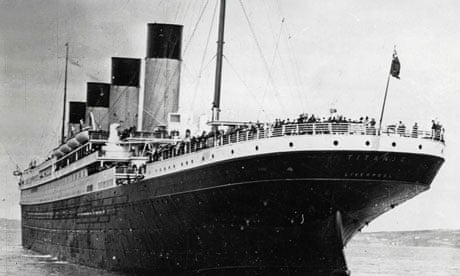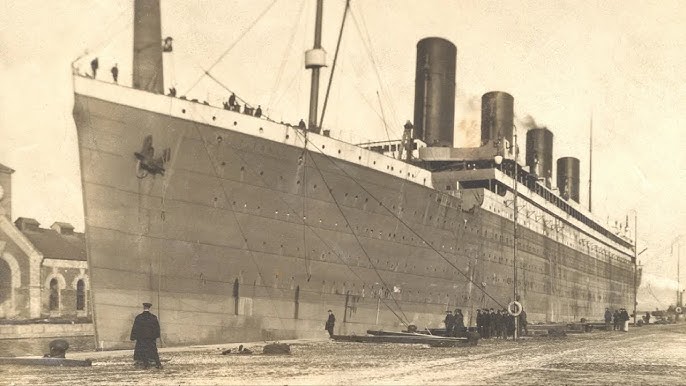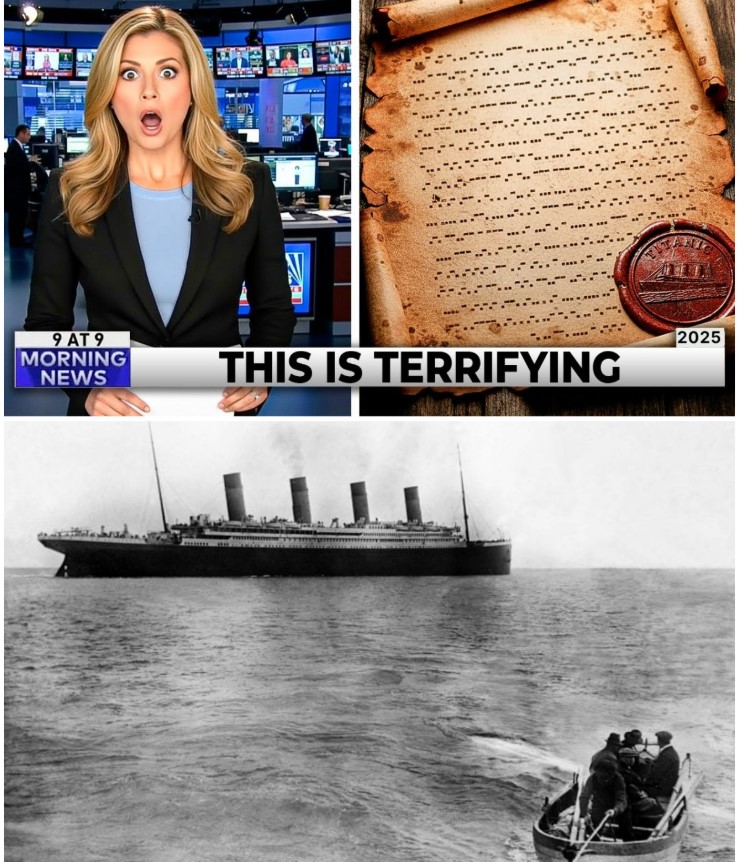 AI Uncovers Titanic’s Last SOS Signal: The Shocking Truth About What Was Really Happening on That Fateful Night Will Leave You Breathless!
AI Uncovers Titanic’s Last SOS Signal: The Shocking Truth About What Was Really Happening on That Fateful Night Will Leave You Breathless! 

The RMS Titanic, a name synonymous with tragedy, has captivated the world since its ill-fated voyage across the Atlantic in April 1912.
While many know the basic story—how the “unsinkable” ship struck an iceberg and sank in the frigid waters, taking over 1,500 lives—new revelations from artificial intelligence are peeling back the layers of this
historical event, exposing startling truths that challenge our understanding of the night everything changed.
When the Titanic departed from Southampton, excitement filled the air.
Passengers reveled in the luxury of the ship, sharing telegrams filled with tales of opulence and comfort.
But on that fateful night, as the ship sailed through the icy waters, the atmosphere shifted dramatically.
The wireless room, bustling with messages of grandeur, was about to become the epicenter of a desperate struggle for survival.
Jack Phillips and Harold Bride, the ship’s wireless operators, were inundated with personal messages from wealthy passengers eager to boast about their journey.
Little did they know that the very equipment they relied on for communication would soon turn into their lifeline.
As the Titanic glided through the dark waters, other ships began sending urgent warnings about icebergs ahead.
The SS Californian, just ten miles away, reported being surrounded by ice, while the SS Masaba warned of heavy pack ice.
However, amidst the chatter of luxury telegrams, these crucial warnings were drowned out.

Phillips, overwhelmed with passenger messages, dismissed the Californian’s operator, effectively silencing the warnings that could have saved lives.
In the days leading up to the disaster, the wireless operators were inundated with over 250 passenger telegrams—far more than previously estimated.
This backlog created a bottleneck, preventing vital navigational warnings from reaching the ship’s officers.
The irony is heartbreaking: as Titanic’s operators sent messages about champagne and fine dining, the warnings that could have steered them away from disaster were lost in the static.
Then, at 11:40 p.m., disaster struck.
Frederick Fleet, a lookout, spotted the iceberg and shouted the now-infamous warning, “Iceberg, right ahead!” Despite immediate efforts to avoid the collision, it was too late.
The Titanic struck the iceberg, tearing open several compartments below the waterline.
Panic ensued as Captain Edward Smith realized the gravity of the situation—Titanic was sinking, and there weren’t enough lifeboats for everyone.
In the chaos, Phillips and Bride sprang into action, sending distress signals into the night.
The first message was a standard distress call, CQD, followed by Titanic’s call sign, MGY.
But Bride suggested they also send the newer SOS signal, a decision that would etch their names in history.

As the operators tapped out their messages, AI technology later analyzed the Morse code, revealing hidden patterns that indicated a growing panic in their transmissions.
The timing between the dots and dashes became increasingly irregular, showcasing the operators’ desperation as the ship began to sink.
The RMS Carpathia was the first ship to respond, but the chaos of overlapping messages created a situation where crucial information was lost.
Ships that could have come to Titanic’s aid were left in the dark due to the crowded radio frequency.
The SS Californian, only ten miles away, had its operator asleep, missing the critical distress calls.
Even when the Californian’s captain saw Titanic’s distress rockets lighting up the night sky, they misinterpreted them as celebratory fireworks, failing to realize the gravity of the situation.
As the night wore on, the irregularities in Titanic’s signals grew more extreme.
By 1:30 a.çm., the urgency in Phillips’s transmissions was palpable.
The spacing between letters shrank, revealing a man on the brink of panic.
He sent messages about the ship’s dire situation, but the AI analysis indicated that many of these crucial communications never reached the ships that could have helped.
The distress signals became a haunting echo of desperation, with the final complete message revealing the chilling truth: “SOS SOS CQD CQD.
We are sinking fast.
Passengers are being put into boats.”

In a cruel twist of fate, a single message from the SS Burma asking for Titanic’s position could have made all the difference.
Phillips began transmitting the coordinates urgently, but just as he was about to send the crucial information, the ship’s power failed.
For nearly ten minutes, the wireless room fell silent, and by the time Phillips regained power, the Burma had moved too far away to receive the signal clearly.
This moment encapsulated the tragedy of the night: help was within reach, but bad timing and failing technology snatched it away.
As the Titanic’s power flickered and the ship sank deeper into the icy waters, the final transmissions became increasingly frantic.
AI analysis detected a hidden layer in Phillips’s Morse code, revealing personal variations that hinted at the true nature of the situation.
The operators were not just sending standard distress signals; they were weaving in details that conveyed a sense of urgency that transcended the formalities of their messages.
At 2:17 a.m., the moment arrived when hope truly disappeared.
The last complete message, CQD SOS CQD, was sent with a rhythm unlike anything before.
Phillips continued to transmit even after the main power failed, switching to emergency batteries in a desperate attempt to reach anyone who might be listening.
The faint echoes of his final messages were a testament to the human spirit’s refusal to give up, even in the face of certain death.

In a haunting conclusion, AI technology uncovered fragments of a transmission so weak that no ship in 1912 could have picked it up.
These chilling words, “Women and children first boat deck,” followed by, “God help us all,” were raw and unfiltered, capturing the essence of despair in those final moments.
The transmission carried slightly different coordinates, astonishingly close to where the wreck was eventually discovered in 1985.
For over a century, the Titanic’s last SOS signal has echoed through history as a symbol of tragedy.
But with modern technology, we now understand that those dots and dashes carried more than just distress codes; they carried fear, desperation, and a final human cry that the world was never meant to hear.
As we reflect on this tragic event, we are reminded of the resilience of the human spirit, the importance of communication, and the haunting echoes of a night forever etched in our collective memory.
What if technology had been more advanced? Could the Titanic disaster have been prevented? Or are some tragedies simply unavoidable, no matter how loud the warnings? The answers may lie in the depths of
the ocean, waiting to be uncovered.
